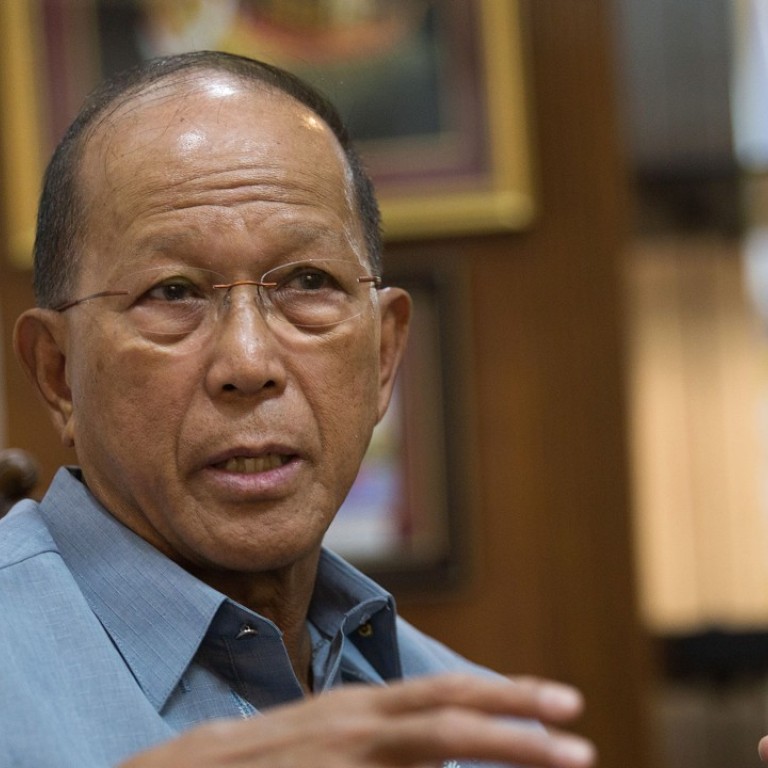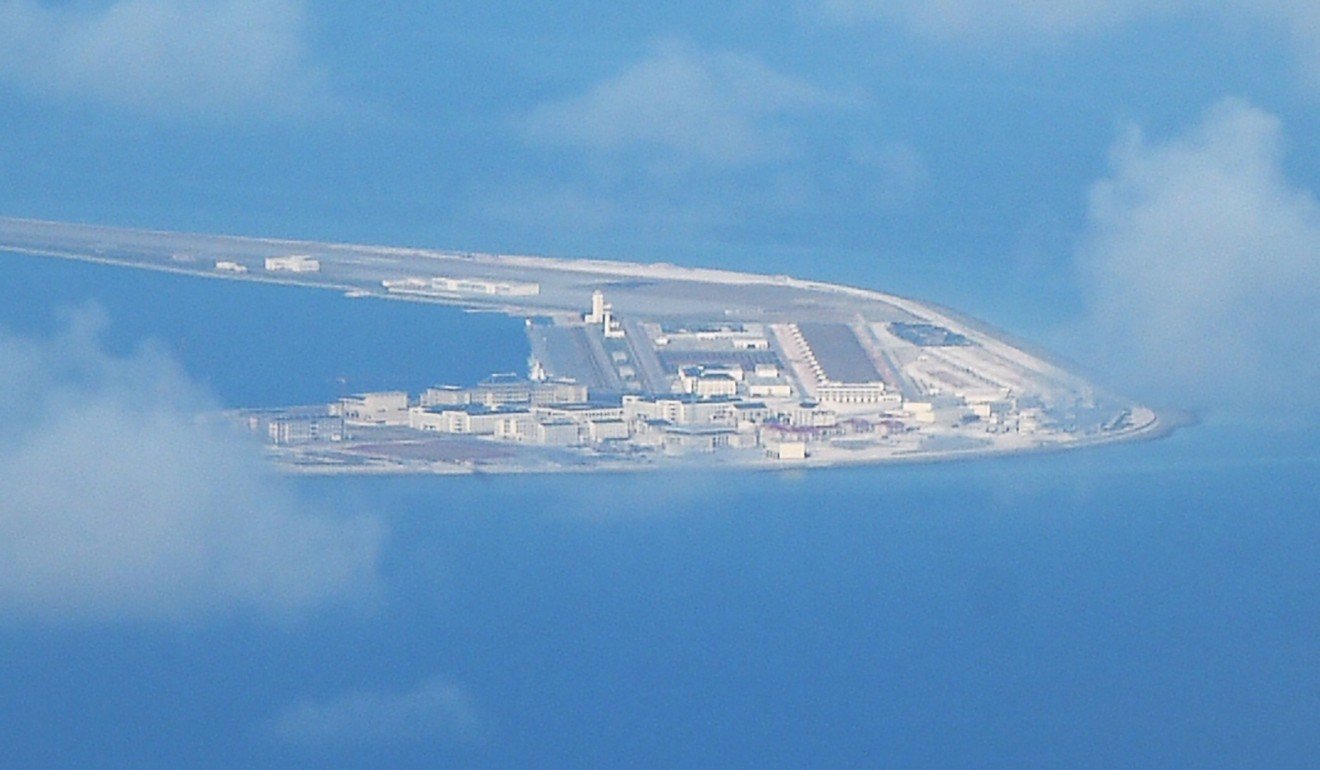
Update | Philippines seeks military protocol with China to head off clashes after South China Sea stand-off
Duterte calls off construction on sandbar in disputed waters after protests from China
China and the Philippines will negotiate a military protocol to avoid maritime “miscalculations”, Manila’s defence minister said on Wednesday, after a brief stand-off over a sandbar near a Philippines-occupied island in a disputed part of the South China Sea.
Disclosing details of the new territorial spat for the first time, Philippine Defence Minister Delfin Lorenzana said President Rodrigo Duterte stopped construction work on the newly formed sandbar – part of a string called Sandy Cay – after China protested.
Lorenzana said the Philippines tried to put up makeshift structures on the sandbar about 4km off Thitu Island in the Spratly archipelago in August, but China objected and sent ships to the area.
The rift remained unresolved but both sides pledged not to occupy any new territory, he said.
“We intend to sit down with China to draft and agree on a protocol to resolve immediately any incident,” Lorenzana said, adding he hoped talks could start this year.
“We hope to avoid any miscalculations in the disputed areas so we need the protocol to act on any problems because we cannot wait for higher authorities to decide.
“Anything can happen anytime, so we want commanders on the ground to decide to prevent violence.”
China claims almost the entire South China Sea, a strategic waterway where about US$3 trillion worth of seaborne goods pass every year. Brunei, Malaysia, the Philippines, Taiwan and Vietnam also have competing claims.
China-Philippines relations have often been frosty over maritime disputes, but ties have warmed under Duterte, who prefers to not provoke Beijing and wants to tap it for loans and investment.
Lorenzana said marines were sent to a sandbar to build shelters made of light materials for Filipino families and fishermen. There were also Chinese fishermen on the sandbar, which covers about 500 square metres, he said.
“China complained because the Philippines was occupying new features, which it said was a violation of a bilateral agreement,” Lorenzana added.

Two senior Philippine security officials told the Associated Press news agency in August that three Chinese navy ships, a coastguard vessel and 10 fishing boats began keeping watch on Sandy Cay after spotting the Filipinos on the barren sandbar.
The Philippines has pressed ahead with US$25 million of upgrades to Thitu Island. A small community of Filipinos has lived there since the 1970s, ostensibly to prop up the country’s claim, although conditions are basic compared to those enjoyed by Vietnamese and Chinese on other islands in the Spratly chain.
The Philippines has defended the upgrades, saying other countries have long been doing the same. China has rapidly built small cities on nearby artificial islands and installed missile systems, radars and aircraft hangars on three of them.
Xinhua said coastguard officials of both countries had met on Tuesday to discuss exchanging visits, building trust and cooperating to prevent cross-border crimes.
Malcolm Davis, a senior defence analyst at the Australian Strategic Policy Institute, said the maritime protocol would likely involve coordinated maritime action between the nations, but agreements of this kind “generally are symbolic”.
“This is useful for the Philippines in the short-term, and for the Chinese,” Davis said. “I think that Duterte is probably trying to do a diplomatic deal … Duterte is probably playing it safe.”
Manila’s push for a maritime protocol was part of its “delicate balancing act” between China and the United States, ahead of the regional summits it would host next week, he said. The country was also wary of China’s new super-dredger ship in the contested waters.
“It’s about how to avoid China taking actions that could cause escalation and destabilisation in the region, particularly now that the 19th [Communist Party] congress is finished, and there is less restraint on China to act in the South China Sea,” Davis said.
Hu Zhiyong, a research fellow with the Institute of International Relations at the Shanghai Academy of Social Sciences, said it would be a positive development if China and the Philippines could agree to a military protocol.
“It would benefit their bilateral relations, elevate trust between the two countries, and maintain the security of the South China Sea.”
Additional reporting by Sarah Zheng and Associated Press



